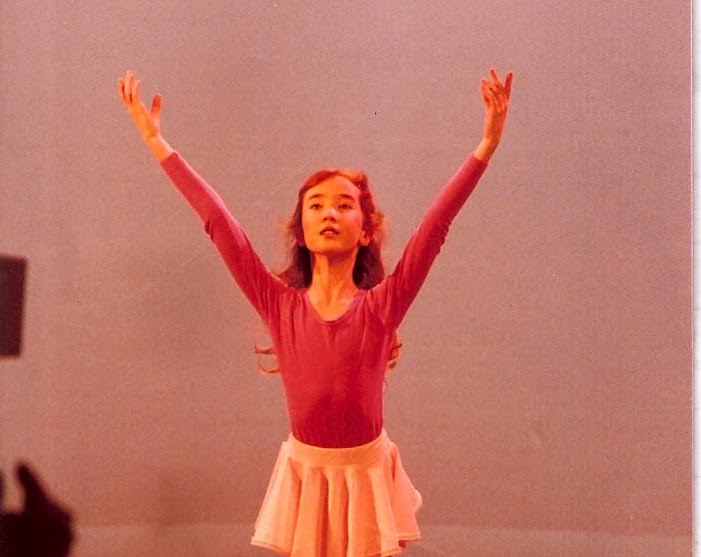
I started dancing around the living room soon after I started walking, and I began formal dance training at age 5. Decades later, dance is still my favorite activity on the planet. As an adult, whenever I feel depressed or stressed, I pop in a DVD of Singing in The Rain and attempt to teach myself the choreography of the dance numbers. I always figured it must be my hopeless crush on Gene Kelly or the unbridled joy embedded in the music and movement that cheers me up, but according to some recent scientific studies, the act of dancing itself may make you feel happier.
In an article called Science Explains Why Dancing is the Fast Way to Make Yourself Feel Happier, Sarah Sloat discusses studies done all over the world that link dance to mood improvement. She explains, “A bulk of research is dedicated to the emotional benefits of dance. In a study conducted in Poland, mood was assessed before and after dance activity among competitive and recreational dancers. While the competitive dancers were admittedly just as stressed as any athlete practicing their craft, the recreational dancers reported higher energy, less tension, and a better, more creative mood than before.”
Sloat also cites a study done in Greece in which a group of women who had just been diagnosed with breast cancer experienced a significant decrease in depressive symptoms when they participated in dance therapy, compared to a control group.
Furthermore, the article reports on the proven ability of dance to aid those with Parkinson’s disease. A ten-week dance program revealed that those with the movement disorder experienced an overall reduction in mood disturbance and in anger. According to Sloat, “Those who indicated depression before the study experienced a decrease in fatigue. Sometimes these health benefits were observed just ten minutes after the dancing began.”
I have taught dance all my adult life but had been on a four year hiatus after having my last child. Last month I returned to teaching with a Musical Theater Dance class for adults, and I am shocked at how much my spirits are lifted not only during that hour, but all week leading up to it. My face hurts after each class because I have been smiling the entire time. One of my students, also a mom returning to the world of dance, said, “This is the most fun thing I do every week! It makes me so happy.” Another student chimed in, “It’s better than wine or chocolate!” A dance class offers a workout that will increase your flexibility, balance, core strength, and cardiovascular fitness, and it can be a calorie-burning bonanza. See the morning spike in my Withings graph below.

The endorphin rush from the exercise, along with the fun of moving to music in sync with others is like a magic formula for happiness. It turns out that dancing is a fitness triple threat: Not only does it benefit your physician and emotional wellbeing, but your brain gets a nice workout too, since it must remain alert and remember all the choreography.
In addition, some styles of dance can actually help ward off dementia. The Albert Einstein College of Medicine conducted a 21-year study of senior citizens 75 years of age or older to study the effects of recreational activities on mental acuity. They published the findings in the New England Journal of Medicine, concluding that frequent dancing is the only physical activity to offer protection against Alzheimer’s or any form of dementia. No other form of exercise or other activity such as reading or doing crosswords even came close. After discovering this surprising finding, the scientists began to question why dancing is so unique.
Professor Richard Powers answers this question in his Stanford University class, entitled Use It or Lose: Dancing Makes You Smarter. He explains, “The essence of intelligence is making decisions. The best advice, when it comes to improving your mental acuity, is to involve yourself in activities which require split-second rapid-fire decision making.” Powers reports that the best way to do that is to learn something new, and the best thing to learn is dance, because “dancing integrates several brain functions at once — kinesthetic, rational, musical, and emotional — further increasing your neural connectivity.”
While Powers states that all dancing is beneficial to the brain, the most beneficial is social dancing that involves a partner-based lead and follow component, because it forces your brain to make a string of non-stop decisions during the dance. Whatever form of dance you do, Powers encourages you to do it often, because the more frequently you dance, the more you reinforce those neural connections.
If you’re looking to get healthier, happier, smarter, and fitter, then you may want to join a dance class near you. If you don’t have time to go out for a class, you can also rent or buy hundreds of DVDs that will teach you how to dance at home, or play a dance video game such as Just Dance, a series that leads you through all kinds of fun choreography. I also recommend instant dance parties at home with your friends and family, which I have with my four- and eight-year-old at least once a week.
If you happen to live in or visit LA and love Musical Theater, come dance with me on Friday mornings at 10am at Evolution Dance Studios in North Hollywood, CA.


